The Complex Landscape of Opioid Analgesics: Addressing The Concerns |ChemFam #61|
Greetings to everyone! Picture a world without pain; a world where discomfort and suffering are mere memories. In our quest for relief, we've turned to a remarkable class of medications called opioid analgesics. These powerful drugs have the ability to whisk away pain, offering solace to those enduring the agony of injuries, surgeries and chronic conditions. But beneath their pain-relieving magic lies a complex tapestry of concerns that have captured the attention of health professionals, policymakers and anyone seeking a life free from the grip of opioids. Many questions have been raised about their potential uses and the probable concerns associated with this special class of compounds. We'll unravel their secrets, explore their effects and dive deep into the controversies surrounding their uses. Moreover, we'll navigate through the storm of concerns, shining a light on potential solutions that can help us harness the power of these medications while taming their risks.
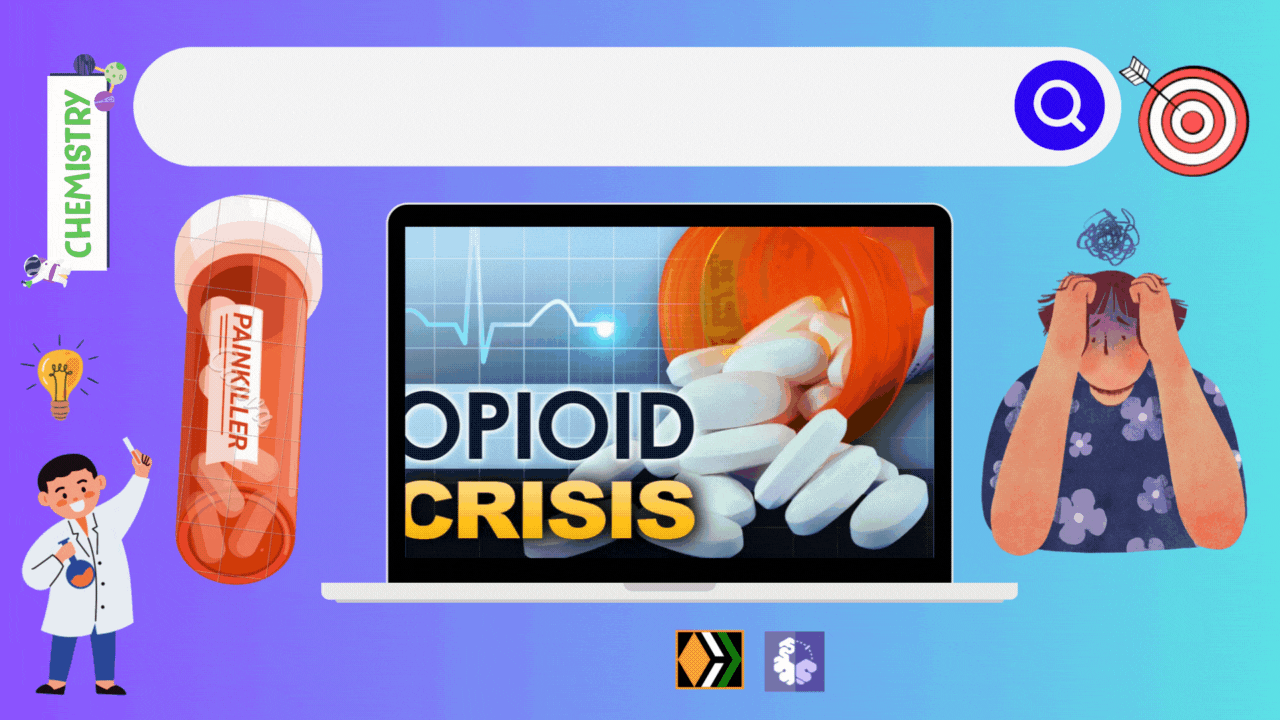

History of Opium
The search for a safe, orally active and non-addictive analgesics based on the opiate structure is one of the oldest fields in medicinal chemistry yet one where true success has proved elusive. Did I say opiates? I might create a confusion here with the terms. The term opiates refers to narcotic analgesics that are structurally related to morphine, whereas opioids is the term used to cover all the synthetic, semi-synthetic and the naturally occurring compounds that interact with opioid receptors in the body.
The history of opioid analgesics dates back thousands of years. Ancient civilizations, including the Sumerians and Egyptians, used opium for pain relief and other medicinal purposes. The first opioids were extracted from opium- the sticky exudate obtained from the opium poppy(Papaver somniferum). Opium is perhaps the oldest herbal plant known to humanity and has been used to treat many ailments. It was particularly good as a sedative and a treatment for diarrhea. From the eighteenth and nineteenth centuries, tincture of opium was very popular in Europe, known as laudanum specially in the Royal Navy, where ships' surgeons used the mixture as an analgesic and sedative. Laudanum is also believed to be one of the first drugs used for "recreational" purposes. A growing realization of the long-term problems associated with consuming opium led eventually to laws being introduced in the twentieth century which limited its uses to medical and scientific purposes.


The Active Principle: Morphine
Opium contains a complex mixture of more than 20 alkaloids. The chief alkaloid in the mixture which is responsible for the analgesic and sedative activity of opium is morphine. Pure morphine was first isolated in 1803, but it wasn't until 1833 that chemists at MacFarlane & Co. (currently MacFarlane-Smith & Co.) isolated and purified morphine on a commercial scale located in Edinburgh. Because morphine was not adequately absorbed orally, it was rarely used in medicine until the invention of the hypodermic syringe in 1853. Morphine injected directly into the bloodstream has been shown to be an analgesic and sedative and was far more effective than opium.

Clinical Aspects of Morphine
Morphine remains one of the most effective pain relievers in medicine and is currently the drug of choice for severe pain. It is specially good for dull, constant pains or rather than sharp periodic pain. It primarily works on the brain and appears to work by reducing the brain's perception of pain by increasing the pain threshold. Unfortunately in the midst of depression there are many side effects such as shortness of breath, constipation, excitation, euphoria, nausea, vomiting, irritation, pupil constriction, tolerance and dependence.
Some side effects may be beneficial. For example, morphine has been shown to cause constipation, leading to the development of opioids for the treatment of diarrhea. Euphoria may be useful in the treatment of pain in terminally ill patients. However, this benefit was not observed in patients with severe pain. In addition, the euphoric effects of morphine on healthy people may encourage people to take the drug for the wrong reasons.
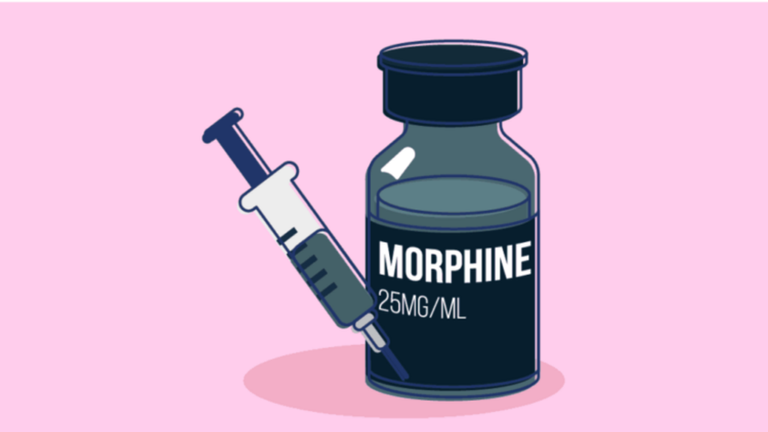
The dangerous side effects of morphine are tolerance and dependence, as well as respiratory problems. In fact, the most common cause of death from morphine overdose is suffocation. This is due to the fact that morphine reduces the sensitivity of the respiratory centers of the brain to carbon dioxide. Tolerance and dependence on a drug are particularly dangerous and cause severe withdrawal symptoms when the drug is stopped.
Morphine-related withdrawal symptoms include anorexia, weight loss, dilated pupils, chills, profuse sweating, abdominal cramps, muscle pain, extreme restlessness, lacrimation, tremors, increased heart rate and blood pressure. No wonder addicts have trouble breaking this habit!

Addressing The Ongoing Opioid Crisis
The United States and several other countries are grappling with an opioid crisis. This public health emergency is characterized by a surge in opioid-related overdoses and deaths, largely driven by the misuse of prescription opioids and the availability of illicit opioids like heroin and fentanyl.
Efforts have been provided to combat this soaring opioid crisis. These includes-
Prescription Monitoring Programs: Many states have implemented prescription drug monitoring programs to track opioid prescriptions and prevent "doctor shopping" or overprescribing.
Opioid Agonist Therapy: Medication-assisted treatment using opioids like methadone or buprenorphine helps individuals with opioid use disorder manage their cravings and withdrawal symptoms.
Naloxone Distribution: Widespread distribution of naloxone, an opioid overdose reversal medication, has saved countless lives.
Education and Prevention: Public awareness campaigns aim to educate people about the risks of opioids and promote responsible prescribing practices.
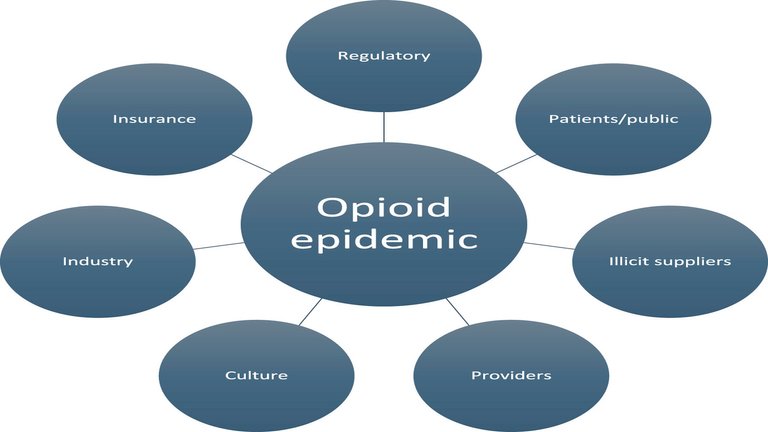
Healthcare providers play a pivotal role in preventing opioid misuse. Implementing stricter guidelines for opioid prescribing, including lower doses and shorter durations, can help reduce the risk of addiction. Physicians should also screen patients for substance use disorders before prescribing opioids.
Comprehensive education campaigns are necessary to raise awareness about the risks associated with opioids. This includes educating both healthcare providers and patients about the potential for addiction, overdose, and safe storage and disposal of opioids.

Morphine Analogues
Considering the problems associated with morphine there is a need for novel analgesic agents which retain the analgesic activity of morphine, but which have fewer side effects and can be administered orally.
The strategy of drug extension involve the addition of extra functional groups to a lead compound as linkages to discover extra binding regions in a binding site. Many morphine analogs containing additional functional groups have been prepared, but few have shown improvement. However, there are two exceptions. The addition of a hydroxyl group at position 14 increases the activity of compounds such as oxymorphone and oxycodone, and opens up the possibility of additional hydrogen bonding with the binding site.
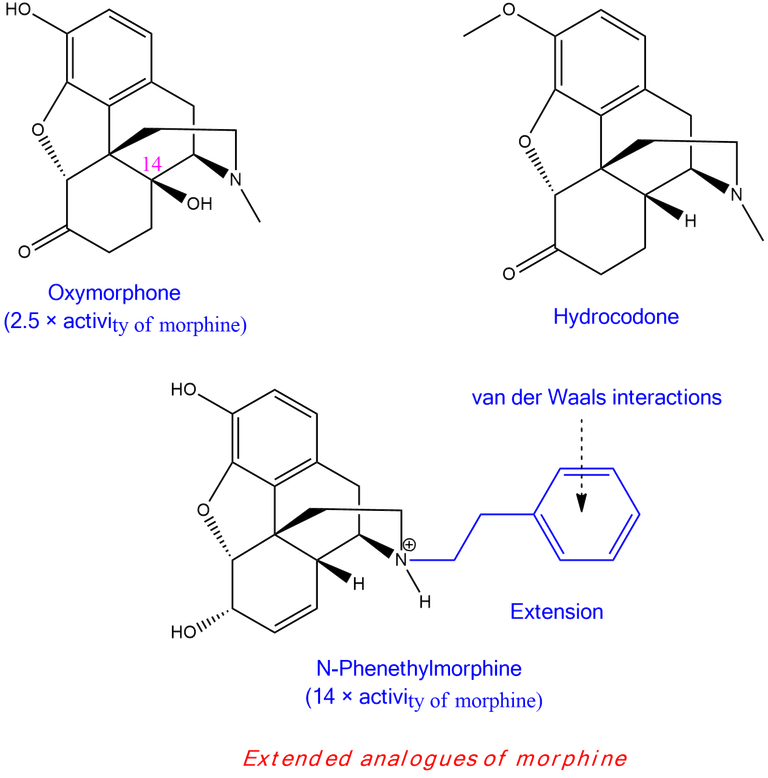
Another exception relates to changes in the alkyl substitution of nitrogen atoms. As the size of the alkyl group increases from methyl to butyl, the activity drops to zero. There is little reactivity for large groups such as pentyl or hexyl. None of this is particularly exciting, but adding a phenethyl group increases the activity 14 times over morphine, this is an indication that the coupling between the hydrophobic domain has been found to interact well with the new ring.
It would be helpful to explain the important consequences that occur when an allyl or cyclopropylmethyl group is attached to nitrogen. Naloxone and naltrexone do not have full analgesic activity, and nalorphine retains only a weak analgesic effect. You might think it's not that exciting, but what's interesting is that they act as antagonists of morphine, that is, they bind to the analgesic receptors without "turning them on", which in turn prevents the morphine from binding. As a result, morphine can no longer show analgesic effect.
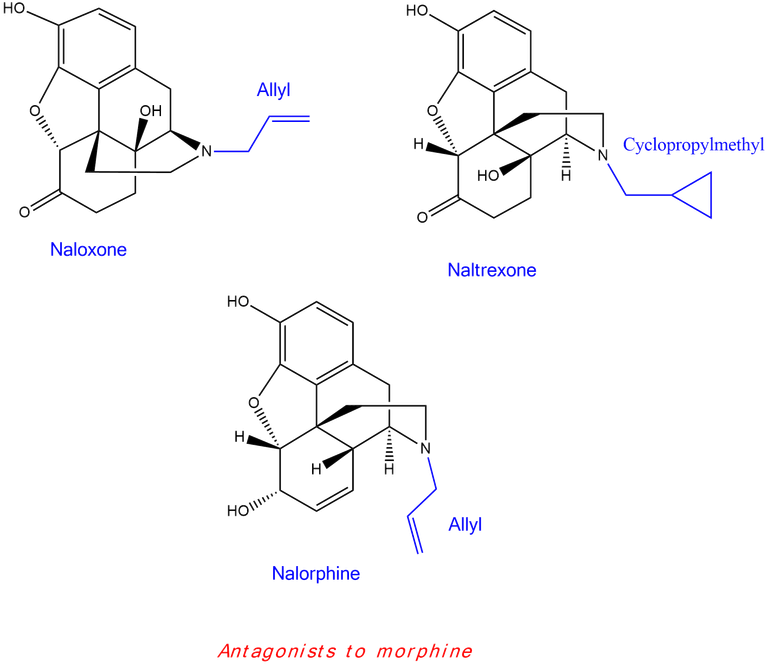
It can be hard for people to see the good in this. If we're just considering solely the analgesia, no there is none! However, the fact that all receptors of morphine are blocked means that it does not cause side effects, and it is the blocking of these effects that makes the antagonists extremely effective. For example, accidental victims are sometimes exposed to overdoses of morphine. If left untreated, the injured person will die of suffocation. Administration of nalorphine means that the antagonist can prevent morphine from binding to opioid receptors and causing withdrawal and leading to recovery.
It's important to note that while these alternatives aim to address the concerns associated with morphine, they are not without their own set of side effects and potential risks. Researchers are dedicated to finding solutions that provide effective pain relief while minimizing the risks of addiction and side effects. These ongoing efforts in pharmacology promise a brighter future for pain management, where patients can experience comfort and healing without the shadows of opioid-related problems.

Conclusive thoughts
The opioid crisis has underscored the need for safer and more effective alternatives to traditional opioid analgesics. While opioids remain a valuable tool for managing pain, but their concerns and risks cannot be ignored. Addressing these concerns requires a multifaceted approach involving healthcare providers, policymakers, and the public. By implementing stricter prescribing practices, increasing education and awareness, expanding access to naloxone and addiction treatment, and investing in alternative pain management research, we can work towards a future where pain relief is effective, safe, and accessible to all, without the devastating consequences of opioid misuse.
Until we meet again :)

The prescription opioid crisis: role of the anaesthesiologist in reducing opioid use and misuse
Advances in Achieving Opioid Analgesia Without Side Effects,
Halina Machelska, Melih Ö. Celik
Green Chemistry by Stanley E. Manahan
Genetic Engineering: Pioneering Progress or Ethical Predicament? |ChemFam #60|
The Guardians Against Microbial Menace: Antibacterial Agents |ChemFam #59|
The Cholesterol Conundrum: The Story of Statins |ChemFam #58|
Unveiling The Control Of Chemistry: How Hormones Dictate Our Mood |ChemFam #57|
Thermodynamic Versus Kinetic Control of Reactions |ChemFam #56|
Bosons: The Quantum Glue That Holds The Universe Together |ChemFam #55|
Extraction of Lithium Using Electrode Materials of Lithium Ion Battery-II |ChemFam #54|
Extraction of Lithium Using Electrode Materials of Lithium Ion Battery |ChemFam #53|
Helium: The First Noble Gas |ChemFam #52|
Hydrogen: The Simplest Atom |ChemFam #51|
Elements, Atoms and Atomic Theory |ChemFam #50|
Have You Thanked A Clod Today? |ChemFam #49|
Nuclear Energy: Will It Rise Again? |ChemFam #48|
Soaps: An Essential and Effective Cleansing Agent |ChemFam #47|
Chemicals in Food : Debunking Myths and Ensuring Safe Consumptions |ChemFam #46|
Unveiling The Secrets of Antiseptics and Disinfectants |ChemFam #45|
What are Antimicrobials and Antimicrobial Drugs? |ChemFam #44|
Therapeutic Action of Different Classes of Drugs |ChemFam #43|
PS The thumbnail image is being created by me using canva.com


This post has been manually curated by @bhattg from Indiaunited community. Join us on our Discord Server.
Do you know that you can earn a passive income by delegating to @indiaunited. We share more than 100 % of the curation rewards with the delegators in the form of IUC tokens. HP delegators and IUC token holders also get upto 20% additional vote weight.
Here are some handy links for delegations: 100HP, 250HP, 500HP, 1000HP.
100% of the rewards from this comment goes to the curator for their manual curation efforts. Please encourage the curator @bhattg by upvoting this comment and support the community by voting the posts made by @indiaunited.
Thank you @bhattg bhai :)